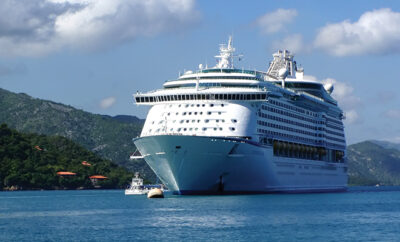
The gem of natural selection and evolution
Blue-footed boobies, iguanas, giant tortoises and parrot fish populate this paradise. No, it’s not a Disney movie. The Galápagos Islands, a chain of 127 islands 600 miles west of the coast of Ecuador, is home to one of the world’s richest land and marine ecosystems.
The average American’s first exposure to the wonders of the Galápagos likely occurred in middle or high school during discussion of Charles Darwin’s theory of evolution by natural selection. Darwin was 26 when he spent five weeks aboard the HMS Beagle in 1835, going ashore to collect specimens of plants, rocks, birds and insects. Almost two centuries later, these isolated islands are a fascinating, living laboratory for the study of geology, ecology and species evolution.
The archipelago is continuously being formed and reformed, as it sits atop one of Earth’s tectonic plates, the Nazca, which crawls over this geologic hot spot. Fernandina, the youngest island, is less than a million years old, and the oldest, Espanola, was formed about four million years ago. In 1959, the government of Ecuador declared the islands a national park, and in 1998 the Galápagos Marine Reserve, created in 1986, was extended to its current area of 51,000 square miles. It’s also a double Unesco World Heritage site, as both land and sea are protected.
The Marine Reserve, situated at the confluence of three major eastern Pacific currents, is influenced by climatic events such as El Niño and demonstrates the dependence on the sea of the islands’ wildlife. The Galápagos marine iguana, found only on these islands, is the only iguana to have adapted, thanks to population and habitat pressure, to feed on underwater algae and seaweed. Even the creatures of the air have adapted. Thirteen species of Darwin’s finches, whose specialized beaks have each adapted to feeding on a specific feed or insect, are evidence of natural selection.
This unique and fragile environment is beginning to feel the stress of tourism, and the uninhabited islands are strictly controlled, with carefully planned tourist itineraries that limit visitation. However, more than 170,000 people take advantage of the natural beauty and wonder of the Galápagos Islands every year. Since they’re sited near the equator, any time of year is good to visit. The busiest months are June, July and August with a second season from mid-December to mid-January, and prices generally reflect the season’s popularity. From December through May is the rainy season, with temperatures in the 80s; June through November is cooler, thanks to the Humboldt current, with temps dropping to the 70s.
Travel to the islands originates in mainland Ecuador; several major American airlines fly into Quito, the capital city, or Guyaquil. United States citizens do not need a visa to visit Ecuador. From there, you can fly into Baltra Island and take a bus and ferry ride to Puerto Ayora on Santa Cruz Island, the most popular tourist hub. Visitors to most of the islands must be accompanied by a guide licensed by the Galápagos National Park, which requires a $100 entrance fee, good for your entire stay. The fee must be paid in cash, but the U.S. dollar is Ecuador’s currency.
From Puerto Ayora, you can book day trips to some of the islands, but the recommended mode of visit and travel is to take a cruise aboard a yacht. Luxury accommodations, including private balconies, large suites and al fresco dining, can make a 4- to 15-day cruise around the islands a complete wildlife immersion experience that can be catered to the needs of singles, couples or families. Small yachts vary between 16 to 32 passengers; the larger ships are no larger than 100 passengers, the maximum number allowed by the park service. It’s best to book early, as these boats fill up quickly.
Most tours stop at Santa Cruz and Cristobal Islands, where you can see the giant tortoises in the breeding centers at the Charles Darwin Research Center in Santa Cruz or the Galapagos Interpretation Center in San Cristobal. Galápagos penguins and giant tortoises congregate around Tagus Cove on Isabela, where you may also visit The Wall of Tears, a stone wall remnant from the old penal colony built by prisoners with no purpose other than to serve as punishment. You’ll find large colonies of marine iguanas and sea lions on Fernandina, the youngest and westernmost island, and the one with the most recent volcanic activity, in April 2009. Visitors are escorted only to the outskirts of the crater for safety reasons.
In addition to wildlife watching, snorkeling, diving, kayaking and hiking are sports that visitors enjoy. Voluntarism is alive also, with opportunities than include habitat restoration on Cristobal Island through Fundación Bolivar Education, where the goal is to eliminate invasive plants and then replant native and endemic species that have been greenhouse grown on site.
With so much to see and experience, the Galápagos Islands are easily a bucket-list travel destination. Pack your warm weather gear and go! HLM
Sources: Adventure-life.com, ecuadorvolunteers.org, galapagosislands.com, travelchannel.com, whc.unesco.org and wikipedia.org.







